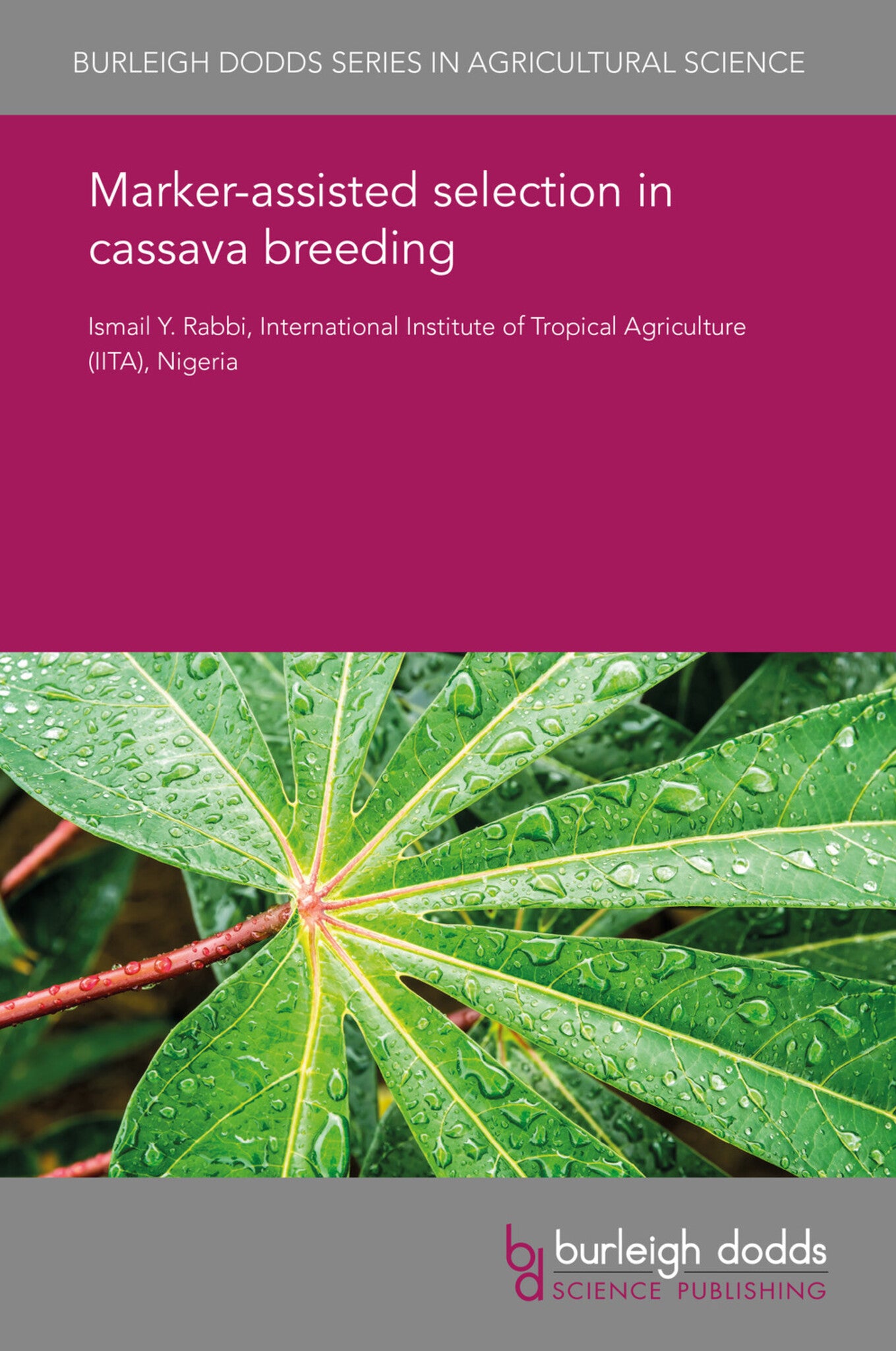We're sorry. An error has occurred
Please cancel or retry.
Marker-assisted selection in cassava breeding
Regular price
£25.00
Sale price
£25.00
Regular price
£25.00
Unit price
/
per
Sale
Sold out
Re-stocking soon
By reducing the number of seedlings using marker-assisted selection (MAS), field breeders of cassava can allocate their limited phenotyping resources to a smaller number of selection candidates for...
Read More

Some error occured while loading the Quick View. Please close the Quick View and try reloading the page.
Couldn't load pickup availability
- Format:
-
31 August 2017

By reducing the number of seedlings using marker-assisted selection (MAS), field breeders of cassava can allocate their limited phenotyping resources to a smaller number of selection candidates for further phenotypic evaluation of complex traits such as yield and drought tolerance. This chapter describes the strengths and limitations of MAS, the resources that are required, and outlines the practical considerations for its implementation. The chapter also describes the contribution of genome-wide studies (GWAS), summarizes the published quantitative trait loci (QTL) studies in cassava and looks ahead to future research and developments in this area.

Price: £25.00
Publisher: Burleigh Dodds Science Publishing
Imprint: Burleigh Dodds Science Publishing
Series: Burleigh Dodds Series in Agricultural Science
Publication Date:
31 August 2017
ISBN: 9781838797225
Format: eBook
BISACs:
TECHNOLOGY & ENGINEERING / Agriculture / Tropical Agriculture, Tropical agriculture, TECHNOLOGY & ENGINEERING / Agriculture / Agronomy / Crop Science, TECHNOLOGY & ENGINEERING / Agriculture / Sustainable Agriculture, Sustainable agriculture, Agronomy and crop production

1 Introduction 2 Molecular markers as genomic resources of cassava 3 Other cassava genomic resources 4 QTL mapping strategies 5 Genome-wide association mapping 6 Conclusion and future trends 7 Where to look for further information 8 References



